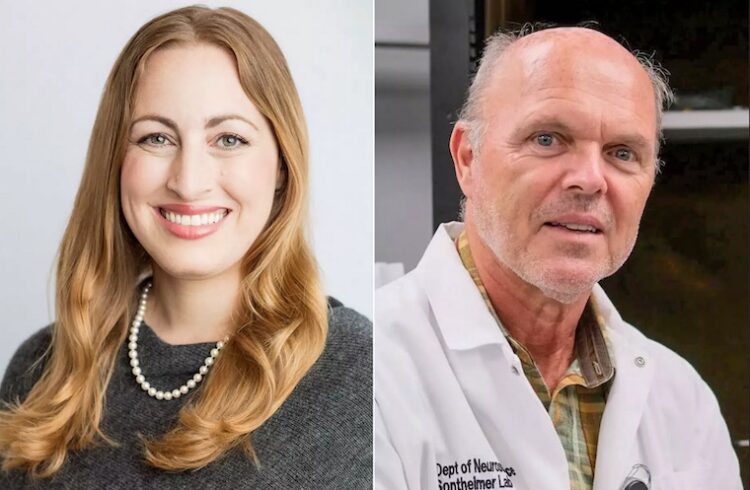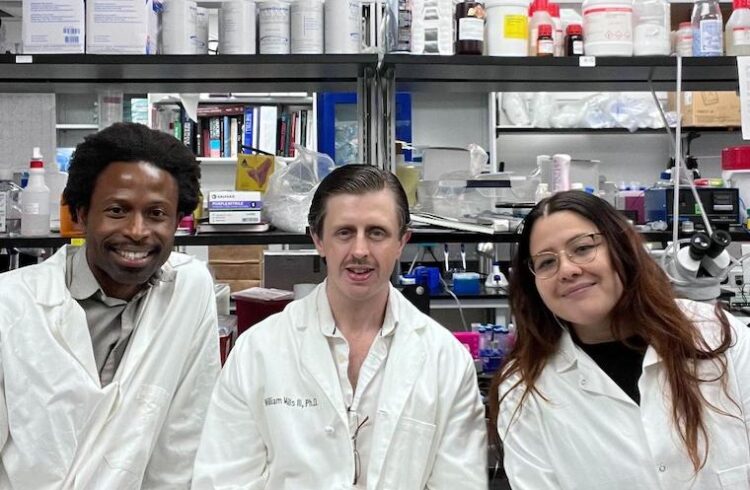
Gregory Bare of Broadway, VA is an avid bicyclist who enjoys riding 20 to 25 miles several days a week. Daniel Smith of Daleville, VA is a retired insurance professional who once regularly criss-crossed the state calling on customers. While the two men travelled some of the same roads, their paths never converged until each visited the offices of Gorav Ailawadi, M.D., a cardiothoracic surgeon at the University of Virginia Health System and an Assistant Professor of Surgery at the UVA School of Medicine.
Bare reports that his heart had been racing uncontrollably, “every now and then.” His last episode began when he was run off Interstate 81 while passing a tractor trailer in his car. Smith says that late last year his heart kept beating rapidly for several months. “It was like running a continuous marathon, and it wiped me out. I had no stamina,” he notes.
Prior to seeing Ailawadi, both men had been diagnosed with atrial fibrillation, or Afib, a condition in which the heart’s electrical circuitry malfunctions, causing the atria (two upper chambers) to quiver and beat irregularly – usually too fast with too little pumping force. Both men also had undergone catheter ablation procedures to correct the problem.
“Catheter ablation is performed inside of the heart and is successful for many Afib patients,” explains Ailawadi. “The procedure our team is doing – surgical ablation (also known as the mini-maze procedure) – uses a similar approach, but is performed on the outside of the heart, providing a more efficient ablation.” A study published in the Journal of Cardiovascular Electrophysiology reported an 88 percent Afib cure rate with this technique.
Both types of ablation use heat to destroy abnormal atrial tissue and to block defective electrical pathways. Catheter ablations have been used to treat Afib since 1994 and involve maneuvering wires from the patient’s leg into the left atrium. By contrast, surgical ablations use three small incisions in the side of a patient’s chest and were first performed on Afib patients in 2002.
In addition to blocking defective electrical circuits in the heart, surgical ablations remove a part of the left atrium called the atrial appendage. Since most blood clots form in the appendage, removing it reduces a patient’s long-term risk of having a stroke, even if Afib returns.
Surgical ablations, which are recommended for Afib patients only if a catheter ablation doesn’t work, are performed at a small percentage of U.S. hospitals. They became available at UVA earlier this year. To date, ten UVA patients have undergone the procedure.
UVA uses a team approach in performing surgical ablations. Patients are carefully screened by both Ailawadi and Srijoy Mahapatra, M.D., a cardiac electrophysiologist. Once Ailawadi completes his work, Mahapatra rigorously checks each patient to ensure that the pathways causing Afib have been blocked and oversees follow-up care. “In performing these procedures, our team combines the best of electrophysiology and the surgical field,” Mahapatra says.
The 62-year-old Smith underwent surgical ablation because his Afib returned within days after his catheter ablation. His doctors advised him to proceed quickly with the second surgery. Smith says he is now more energetic and active. “I still have a little shortness of breath but have learned to pace myself,” he adds.
Bare, who is 54, says he resumed cycling two weeks after his surgery. “Deciding to go ahead with this operation was a risk-reward thing for me,” he explains. “I saw it as something that would let me continue to live life to the fullest.” He now hopes to begin racing competitively.
Afib is the most common heart rhythm disorder and affects more than 2.2 million Americans, most of whom are elderly, suffer from hypertension or have other heart problems. More than 350,000 new cases are diagnosed each year, and it’s estimated that by the year 2030 about 5.6 million people in the U.S. will have it. Untreated Afib is a major cause of stroke and can also lead to more serious heart rhythm disorders and heart failure.


